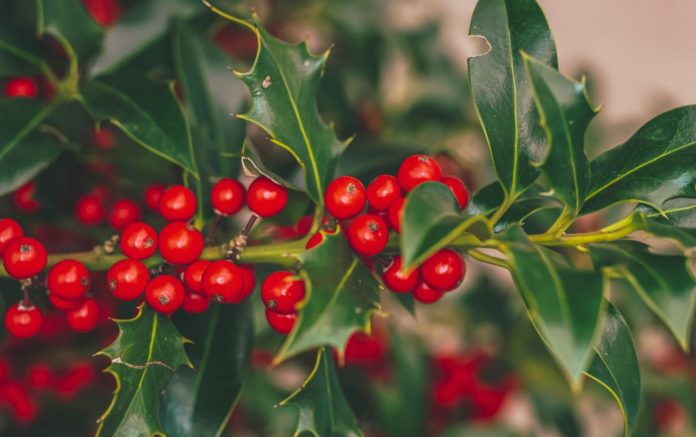Scientists reveal which plants should be on the naughty list
Before you joyously deck your halls, experts in The BMJ’s Christmas edition give a warning about the risks of plants associated with the festive season.
To help people understand this prickly subject, they made a list of plants to look at. As part of this, they talked to their friends and coworkers about what plants they thought of when they thought of Christmas. They also looked at the aisles of stores, garden centers, and florists to see what plants they thought of when they thought of Christmas.
They next reviewed each plant to the National Poisons Information Service (ToxBase) database, and those that were found to be harmful were further probed for evidence of danger.
Except for a few cases of contact dermatitis in individuals with exceptionally high exposure, Christmas trees (at least the organic sort) are thankfully regarded as safe to rock around.
Ivy is another low-risk plant, however, holly should be hung with caution because its berries contain saponins, which can induce stomach trouble, drowsiness, and even balance and speech issues (ataxia) if taken in high amounts.
If your true love gives you a pear tree (or 12) for Christmas, don’t eat the seeds. Pears are one of many fruits possessing amygdalin in their pits, seeds, or kernels, which is converted to cyanide in the stomach. While no human cyanide poisoning has been reported as a result of pear seed-eating, the authors caution that the fruit of 12 trees may be sufficient.
Mistletoe includes harmful proteins called viscotoxins, which can cause pain as well as pleasure (ricin famously among these). The writers caution that Cliff Richard’s renowned holiday song Mistletoe and Wine is an especially bad mix.
Carolers who are greeted by wreaths made of bittersweet and yew should also exercise caution. Bittersweet is a nightshade whose berries contain solanine glycoalkaloids, which at high concentrations can induce unpleasant abdominal cramps, whereas yew has a long history of being poisonous and was considered as a suicide technique by defeated Celtic tribes during Julius Caesar’s conquest of Gaul.
Cyclamen species, Christmas Cactus, and poinsettia are all considered safe indoor Christmas flowers, although the authors recommend keeping the sap away from your eyes to avoid irritation.
The decorative Christmas rose and hellebore, on the other hand, contain chemicals that can change the heart’s beat. Additionally, the seductive berries of the Jerusalem or Christmas cherry (another nightshade) should be avoided.
Even Christmas dinner, the scientists warn, may contain some toxic plant species, though not nearly as many as the calories and alcohol consumed.
For instance, potatoes are a nightshade relative of the Christmas cherry, but the tuber contains the fewest solanines and hence is unlikely to have any adverse consequences.
Buttered parsnips, on the other hand, should be alright as long as you know what you’re doing. Poisonous water hemlock has been mistaken for parsnips by foragers, resulting in seizures and kidney failure.
Unfortunately, Brussels sprouts do not appear to be harmful, according to the authors.
“Looks like you’ll have to endure them after all.”
Finally, they issue a warning about cinnamon and nutmeg, two spices commonly found in eggnog and mulled wine.
After multiple instances of respiratory distress requiring medical treatment, they recommend avoiding the “cinnamon challenge” (a viral video challenge to eat a teaspoon of ground cinnamon in under 60 seconds without drinking anything), while nutmeg can cause hallucinations at a surprisingly low dose (less than a tablespoon).
In conclusion, the authors advise taking reasonable measures, such as avoiding foliage, ornamental household plants, and unfamiliar wild species; berries (the safe ones) can be eaten at any time of year, not only during the holidays.
“We hope that this piece has given you the information necessary to navigate holiday foliage more safely,” they concluded.
Source: 10.1136/bmj-2021-066995
You were reading: Which festive foliage should be on the naughty list? – Study finds
